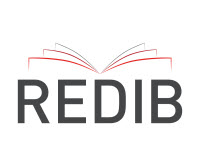A Moça Tecelã: uma análise semiótica do conto de Marina Colasanti
DOI:
https://doi.org/10.21680/1517-7874.2019v21n2ID15963Abstract
This research aims to reflect on reading as a meaning-building activity. Thus, the text is not seen as a finished object, but the meaning of it is complete in the reader, resulting from communicative operations and sociocommunication linguistic processes. As a corpus for the application of the theory under study, we chose the short story "The Weaver Girl", by Marina Colasanti, which configures a text of great significant density, allowing the reader to contribute to the texture of the text. In the construction of this article, qualitative bibliographical research was carried out, considering the contributions of theoretical sources that base the search for answers on the topic addressed. Therefore, the way in which the author constructs the text presupposes the participation of the reader in the construction of meaning. Marina Colasanti's tale gains meaning and significance, not only as a narrative aimed at a child-youth audience, but also for any active, participatory reader, capable of reaching implicit information present in the text, completing the meaning of the text, as a co-author of a unfinished object. Thus, it is worth emphasizing that the heart of the production of meanings is in the relation between the said and the understood.
Downloads
Downloads
Published
How to Cite
Issue
Section
License

Este trabalho foi licenciado com uma Licença Creative Commons - Atribuição - NãoComercial - CompartilhaIgual 3.0 Não Adaptada.
 Português (Brasil)
Português (Brasil) English
English Español (España)
Español (España)









.jpg)




